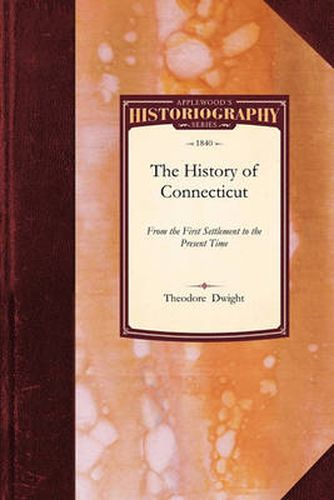Readings Newsletter
Become a Readings Member to make your shopping experience even easier.
Sign in or sign up for free!
You’re not far away from qualifying for FREE standard shipping within Australia
You’ve qualified for FREE standard shipping within Australia
The cart is loading…






This title is printed to order. This book may have been self-published. If so, we cannot guarantee the quality of the content. In the main most books will have gone through the editing process however some may not. We therefore suggest that you be aware of this before ordering this book. If in doubt check either the author or publisher’s details as we are unable to accept any returns unless they are faulty. Please contact us if you have any questions.
Purchase of this book includes free trial access to www.million-books.com where you can read more than a million books for free. This is an OCR edition with typos. Excerpt from book: 30 FIRST EXPLORERS. [1631. in 1796. Deer were not uncommon in Middlesex county up to 1765, when, in a time of deep snow, they appear to have been exterminated. The last moose seen in that part of the state is believed to have been one killed in 1770, in the southwestern part of Saybrook. Wild turkeys were numerous in the same neighbourhood till 1780; and continued to be seen, though more rarely, as late as 1790. A panther was shot in Windsor in 1767. CHAPTER III. 1631?1636. First Explorers of Connecticut River.?The Plymouth People invited to settle on its Banks.?Windsor Trading-house.?The Dutch Fort and Trading-house built at 11 art lord.?Reasons for settling the country on Connecticut River proposed to Massachusetts.?Objections made to the Project.?Those objections honourable to the character of the Colonists.?Five men spend the winter of 1635-6 at Pyquag, or Wethersfield. ?Three companies of Colonists form Settlements in 1636 at Hartford, Windsor, and Wethersfield, first called New- town, Dorchester, and Watertown.?Lord Say-and-Seal and his associates send men to build Saybrook Fort. It is uncertain whether Connecticut was first visited by the English or the Dutch. Both claimed to be the first explorers. The river and its fertile borders attracted the earliest attention. In 1631, one of the sachems living on that stream visited Plymouth and Boston, and earnestly solicited the governors of those settlements to send a colony to occupy the country. He stated that the land was exceedingly fruitful, and he promised to give themeighty beaver-skins a year, and plenty of corn. The proposal, however, was not agreed to; and it was afterward ascertained, that the object of the In- dians in making it was to secure the protection of the English against the Pequods, who, under P…
$9.00 standard shipping within Australia
FREE standard shipping within Australia for orders over $100.00
Express & International shipping calculated at checkout
This title is printed to order. This book may have been self-published. If so, we cannot guarantee the quality of the content. In the main most books will have gone through the editing process however some may not. We therefore suggest that you be aware of this before ordering this book. If in doubt check either the author or publisher’s details as we are unable to accept any returns unless they are faulty. Please contact us if you have any questions.
Purchase of this book includes free trial access to www.million-books.com where you can read more than a million books for free. This is an OCR edition with typos. Excerpt from book: 30 FIRST EXPLORERS. [1631. in 1796. Deer were not uncommon in Middlesex county up to 1765, when, in a time of deep snow, they appear to have been exterminated. The last moose seen in that part of the state is believed to have been one killed in 1770, in the southwestern part of Saybrook. Wild turkeys were numerous in the same neighbourhood till 1780; and continued to be seen, though more rarely, as late as 1790. A panther was shot in Windsor in 1767. CHAPTER III. 1631?1636. First Explorers of Connecticut River.?The Plymouth People invited to settle on its Banks.?Windsor Trading-house.?The Dutch Fort and Trading-house built at 11 art lord.?Reasons for settling the country on Connecticut River proposed to Massachusetts.?Objections made to the Project.?Those objections honourable to the character of the Colonists.?Five men spend the winter of 1635-6 at Pyquag, or Wethersfield. ?Three companies of Colonists form Settlements in 1636 at Hartford, Windsor, and Wethersfield, first called New- town, Dorchester, and Watertown.?Lord Say-and-Seal and his associates send men to build Saybrook Fort. It is uncertain whether Connecticut was first visited by the English or the Dutch. Both claimed to be the first explorers. The river and its fertile borders attracted the earliest attention. In 1631, one of the sachems living on that stream visited Plymouth and Boston, and earnestly solicited the governors of those settlements to send a colony to occupy the country. He stated that the land was exceedingly fruitful, and he promised to give themeighty beaver-skins a year, and plenty of corn. The proposal, however, was not agreed to; and it was afterward ascertained, that the object of the In- dians in making it was to secure the protection of the English against the Pequods, who, under P…